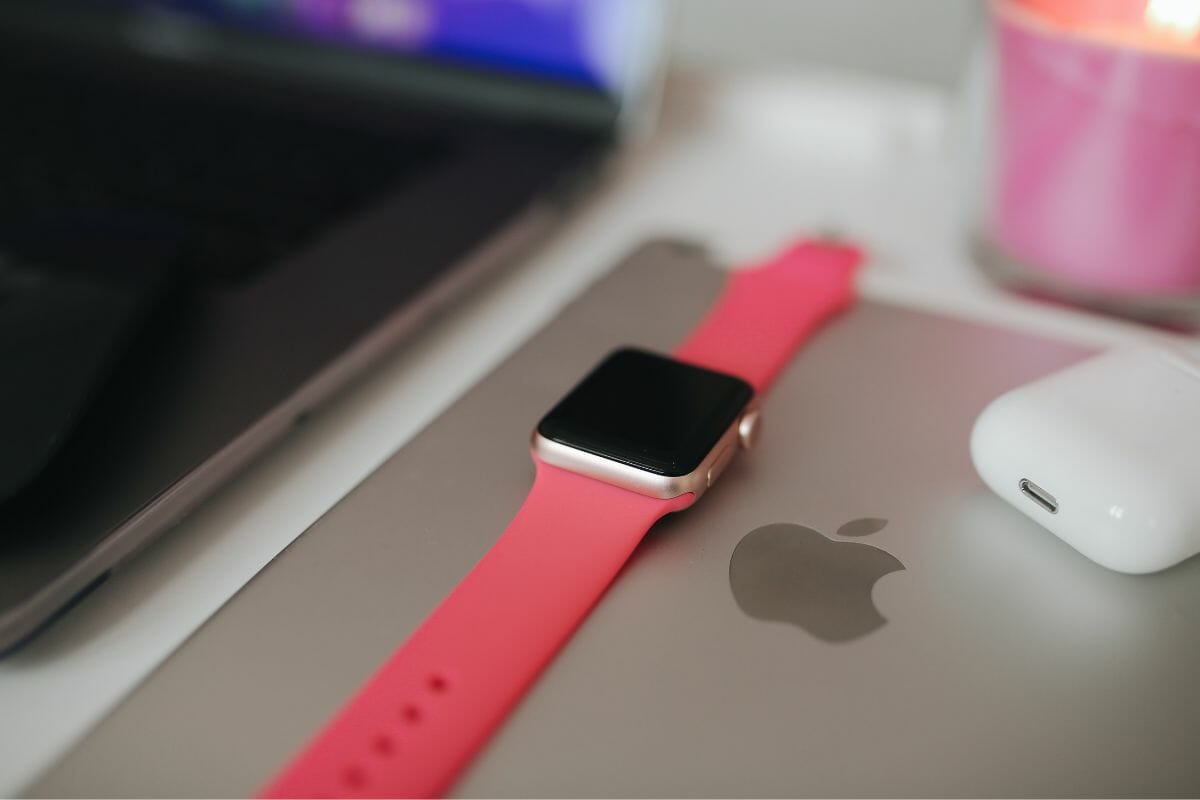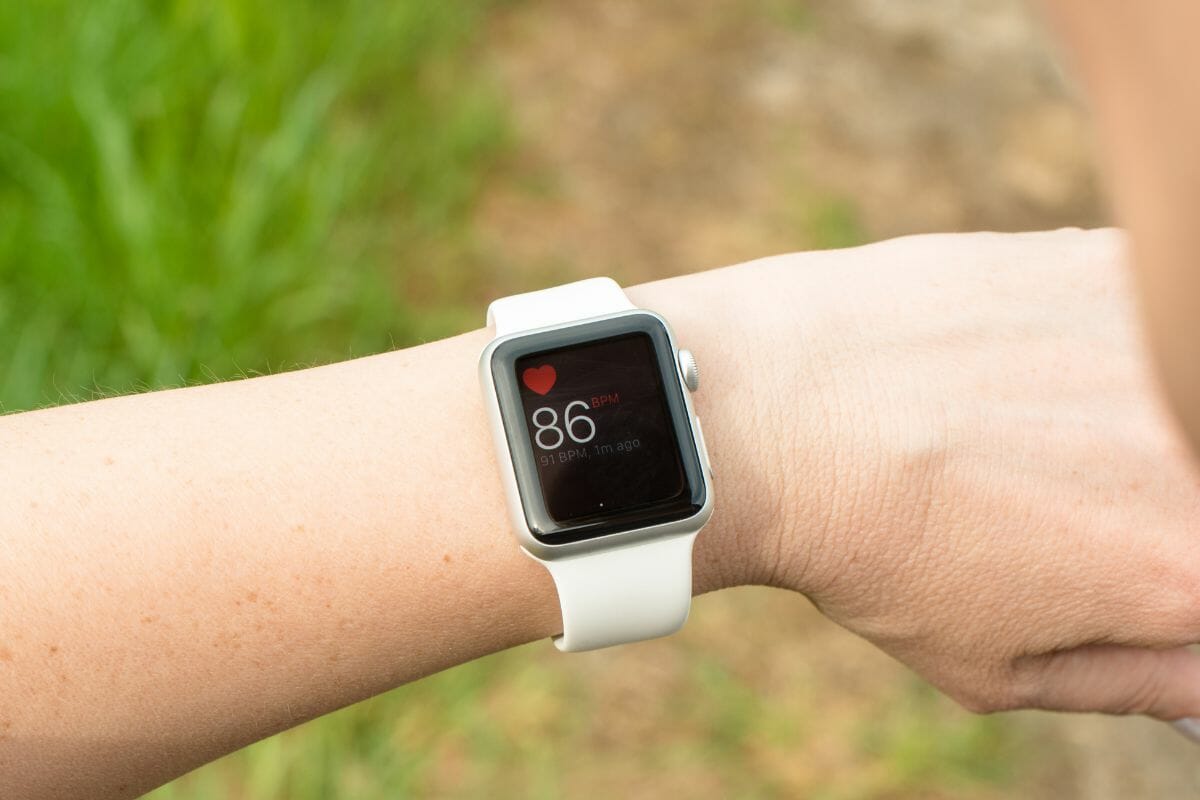The Apple Watch is an innovation that has become a key part of life for many tech fans, and with so many features and awesome functions, it is easy to see why!
To help you get started with making the most of your Apple Watch, we have put together a few things that you need to know – including the significance of the green light, whether you need it, and how to turn it off to avoid annoyance.

What Is An Apple Watch?
The Apple Watch is a smartwatch designed by Apple Inc. that runs on iOS software. It was announced in September 2014 and released in April 2015.
The watch comes with two main components: A round display screen and a thin band that connects to its backside.
The display shows time, incoming calls, messages, emails, calendar events, fitness data, reminders, and other information.
The display can be customized to show different types of content depending on what apps are installed on the device.
How Does The Apple Watch Work?
There are three main parts to the Apple Watch: the display, the processor, and the battery.
When you first start using the watch, the display will show the time and some basic information about the weather.
You can also set up notifications for certain people and activities. These include messages, phone calls, email alerts, and more.
When you receive a message or call, the watch vibrates and displays the alert on the display. If you receive a text message, the watch will display the number next to the time.
When you receive an email, the watch will display a preview of the message and allow you to reply straight from the watch.
You can also use the watch as a calculator, stopwatch, timer, and even a pedometer. All these functions work through the watch’s built-in sensors and app store.
You can download new apps from the App Store onto your watch, which allows you to customize the functionality of the watch.
There are over 3,000 apps available at launch, but this number is expected to grow quickly.
What Is The Green Light On My Apple Watch?
One of the most common questions that many Apple Watch users tend to have is just what that green light on your watch is for, and whether or not it needs to remain switched on.
The green light is an optical heart sensor – this measures and tracks your heart rate by shining green lights onto the skin, and this takes place hundreds of times each second.
These lights detect the amount of blood flow, as well as the number of heartbeats per minute, and use this information to calculate your overall heart rate, which is displayed in Beats Per Minute, or BPM.
For most adults, the average resting heart rate tends to be between 60 and 100 beats per minute, and so if your reading falls into this range, you can be sure that you are fit and healthy, and that your heart rate is within the normal parameters.
Why Is It Important To Know My Heart Rate?
Your heart rate is one of the most important health indicators that you should monitor regularly.
Your heart is responsible for pumping blood around your body, delivering oxygen to all of your cells, and removing waste products.

If your heart isn’t working properly, then it could lead to problems such as high blood pressure, chest pain, irregular heartbeat, stroke, and even sudden cardiac arrest.
Knowing how often your heartbeats occur every second is vital because it gives you a good indication of how healthy your heart is, and allows you to take immediate action if you are concerned that something is wrong.
It is also important to know when your heart starts beating too fast or too slow because this can indicate a problem with your heart rhythm.
This is known as arrhythmia, and it can cause symptoms such as dizziness, fatigue, shortness of breath, chest pains, palpitations, and other similar issues.
Knowing your heart rate also helps you understand how active you are during the day, and how much stress you’re under.
You may notice that your heart rate increases when you’re stressed out, anxious, or worried about things, and decreases when you relax and feel happy – all of this information can be very useful in helping you to maintain an active, healthy lifestyle.
What Fitness Elements Does The Apple Watch Track?
The Apple Watch has two main fitness elements: activity tracking and sleep monitoring.
Activity tracking involves measuring your movement throughout the day, and this includes walking, running, cycling, swimming, weightlifting, and any other physical exercise that you do.
This data is stored in the Health app, and you can view this data in graphs and charts to see exactly how active you were during the day.
Sleep monitoring involves using sensors to track your sleeping pattern, and this means that your Apple Watch will use accelerometers to determine when you fall asleep and wake up, and this information is sent back to the Health app.
This data is used to help you get better sleep, and it will show you how long you spent sleeping, how much time you spend awake after falling asleep, and the quality of your sleep.
How Do I Use The Activity Tracking Data?
You’ll find the activity tracking data in the Health app, where you can view your daily activities in graphs and charts.
To access these graphs and charts, open the Health app, tap on the section labeled “Movements”, and then tap on the graph or chart that interests you.
Here you can see your daily movements over the past week, month, and year, and you can compare them against previous days, weeks, months, and years.
You can also choose to view your steps taken each day, your distance traveled, and your calories burned.
When Will My Apple Watch Measure Heart Rate?
Your Apple Watch will measure your heart rate automatically while you are wearing the device, and this will be shown on the display while you are working out and increasing your heart rate by a substantial amount.
As we have seen, being able to measure and monitor heart rate is important, but there may be occasions when you wish to disable the heart rate monitor and turn the green light off – this includes if you have hesitations or concerns over the accuracy of the readings, or if you prefer to rely on readings directly from your physician.
You can turn the green light and heart rate monitor off on a temporary basis using the following steps:
Remove The Watch From Your Wrist
One of the easiest ways to turn off the green light is to simply remove the watch from your wrist; this will prevent the green light from detecting a pulse and measuring heart rate, and the light should automatically turn off after a few minutes.
End Your Workout
Once you have finished exercising, simply tap the button in the top-right corner of the screen to end your workout – this will tell the watch that you are no longer exercising.
Turn Off The Green Light And Heart Rate Monitor
You can also head to the Health App, tap “My Watch” and then head to “Privacy”. Head to “Motion and Fitness” and select the option to turn off Heart Rate – this will turn the green light off.
To stop seeing the green light on a more permanent basis, tap the “Stop” button next to “Heart Rate”. You’ll still see the number under the “Activity” section, but you won’t get any notifications when you’re exercising.
If you are concerned about the accuracy of the heart rate measurements, you should take note that when you first start wearing an Apple Watch, it will need some time to calibrate with your body’s electrical impulses.
This process takes around 30 minutes, and once it has been calibrated, it will continue to work accurately for the rest of the day.
Final Thoughts
Wherever possible, it is a good idea to keep your heart rate monitor on and active – knowing your heart rate is important for maintaining good health and can alert you to changes and concerns that you may need to be aware of very quickly.
In some cases, however, you may wish to simply take a break, and the methods above will help you to turn off the green light and stop tracking and measurements temporarily.
- How to connect Bluetooth headphones to a Chromebook Without Summoning Tech Support - December 15, 2025
- Best Fitness Trackers for EMS Workers: Because Your Heart Rate Isn’t the Only Thing Racing - December 15, 2025
- Why do my Bluetooth headphones not skip tracks? Tech tantrums and other musical mysteries - December 14, 2025






